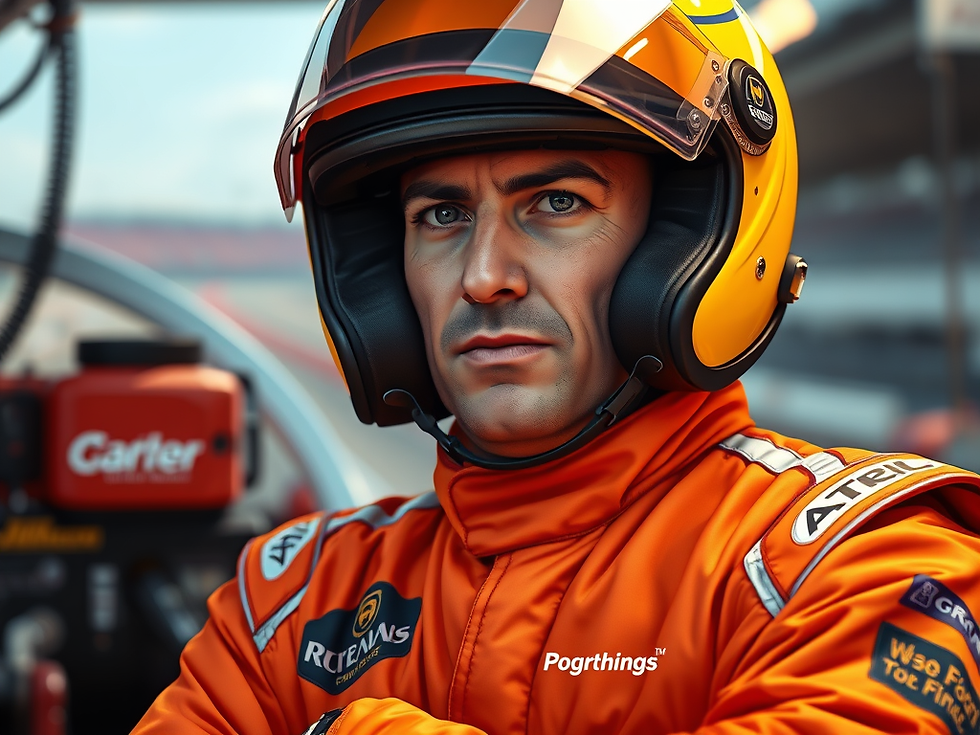How Brain Chemistry Drives Team Dynamics
- pedrop677
- Jul 21
- 4 min read
Understanding how brain chemistry affects team dynamics can unlock powerful insights into what makes groups thrive or fail. Whether it’s in the workplace, a sports team, or a recreational setting like karting, certain neurochemicals have a strong influence on how people interact, collaborate, and connect. By diving into the science of neurotransmitters such as dopamine and adrenaline, we can see how they play a crucial role in trust, motivation, and group performance. This is especially relevant in team-building activities where high energy and social cohesion are key. According to Harvard Health, the structure of the brain itself is tightly linked to how well we socially engage.
Dopamine, Adrenaline, and Group Bonding
Neurotransmitters are chemical messengers that transmit signals between nerve cells. Some of these, like dopamine and adrenaline, are critical when it comes to team bonding and group success.
The Role of Dopamine in Motivation and Success
Dopamine is often referred to as the "reward" neurotransmitter. It plays a significant role in motivation, pleasure, and the sense of achievement. In a team setting, dopamine surges when a shared goal is achieved, reinforcing collaborative behavior.
Examples of Dopamine in Action
Completing a challenging project together
Winning a race or match
Getting public recognition as a group
When team members experience these small dopamine boosts collectively, the bonding becomes stronger. That sense of shared victory is not just emotional—it’s chemical.
Adrenaline and Group Energy
Adrenaline kicks in during high-stress or exciting moments. It prepares the body for action by increasing heart rate, sharpening focus, and pumping energy into the system. In group settings, adrenaline can lead to synchronized high-performance moments.
Adrenaline in Team Scenarios
Preparing for a critical pitch
Participating in competitive events like karting
Managing a high-pressure deadline
When shared among teammates, adrenaline can create what some call "group flow," where everyone is in sync and fully engaged.
Neurochemical Synchrony: The Real Key to Team Bonding
When teams work together in high-engagement scenarios, their brain chemistry starts to sync. Shared dopamine boosts and adrenaline spikes lead to a stronger sense of connection. This is why people often feel a closer bond after facing challenges or celebrating wins together.
Substances That Alter Motivation and Cohesion
Modern lifestyle choices and habits can directly or indirectly affect brain chemistry, which in turn shapes how people operate in groups.
How Food and Sleep Influence Team Chemistry
Nutrition
A diet rich in omega-3s, B vitamins, and amino acids supports neurotransmitter production. Inadequate nutrition, on the other hand, can lead to low dopamine and serotonin levels, making collaboration feel harder.
Sleep
Lack of sleep reduces dopamine sensitivity and can increase irritability. A sleep-deprived team is less cohesive and less effective.
Caffeine, Vaping, and Stimulants
Caffeine can enhance short-term focus, making it a popular team meeting companion. However, overconsumption may lead to anxiety and jitteriness, which can hurt communication.
Vaping, especially with nicotine or hybrid blends, can also influence neurotransmitter levels. Some users report a short-term increase in clarity or relaxation, depending on the compound. In team settings, whether during work or travel, it’s not uncommon to find someone casually reaching for their Geek Bar Ria NV30K Vape during a break. For some, it’s a quick way to mentally reset before re-engaging.
Alcohol and Other Mood Modifiers
While alcohol can initially boost dopamine, its long-term effects include reduced motivation and poor cognitive function. A team that routinely uses alcohol to bond may see diminished productivity and focus over time.
Karting as a Team Mood Booster
Team-building activities are designed to foster trust, boost morale, and sharpen communication. Karting has proven to be one of the most effective and exciting tools for achieving this.
Why Karting Works So Well
Karting combines physical challenge, strategic thinking, and adrenaline-pumping speed—all ideal conditions for enhancing neurotransmitter release.
Dopamine from Competition
Every overtake, every corner handled well, and every lap record broken offers a jolt of dopamine. When teammates cheer each other on or celebrate victories together, the shared chemical high helps build real, lasting bonds.
Adrenaline from Speed and Strategy
Driving at high speeds naturally elevates adrenaline. Team members often find themselves more alert, more focused, and more emotionally engaged with each other after the experience.
Case Studies: Companies Using Karting
Tech startups often use karting to break the monotony of screen-heavy workdays. It allows developers and marketers to build trust outside the office.
Sales teams use it as a performance reward and bonding exercise. It gives top performers a stage and everyone else a sense of friendly competition.
Emotional Afterglow and Trust
After intense physical activity like karting, the body enters a state of calm. Oxytocin levels may rise, promoting trust and social closeness. This is why post-karting meals or discussions often feel more relaxed and cooperative.
Final Thoughts on Brain Chemistry and Team Success
When we think of teamwork, we often focus on communication styles, leadership, or shared goals. But brain chemistry is an equally important piece of the puzzle. The balance of dopamine, adrenaline, and other neurotransmitters directly impacts how we collaborate, respond to stress, and celebrate success.
This is why activities that stimulate the brain in dynamic ways—like karting—are far more effective than passive team-building efforts. They trigger neurochemical reactions that enhance bonding naturally and efficiently.
It’s also essential to recognize how lifestyle choices shape team dynamics. Whether it’s a good night’s sleep, a caffeine habit, or a quick break with a familiar vape device, small factors can tip the chemical balance and influence how we connect with others.
In the end, the chemistry between team members isn’t just metaphorical. It’s quite literal. When we understand and nurture that chemistry, both morale and performance improve—one neuron at a time.



Comments